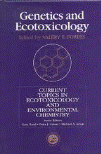Papers in the Biological Sciences

Valery Forbes Publications
Document Type
Article
Date of this Version
2009
Abstract
This chapter introduces ABMs, their construction, and the pros and cons of their use. Although relatively new, agent-based models (ABMs) have great potential for use in ecotoxicological research – their primary advantage being the realistic simulations that can be constructed and particularly their explicit handling of space and time in simulations. Examples are provided of their use in ecotoxicology primarily exemplified by different implementations of the ALMaSS system. These examples presented demonstrate how multiple stressors, landscape structure, details regarding toxicology, animal behavior, and socioeconomic effects can and should be taken into account when constructing simulations for risk assessment. Like ecological systems, in ABMs the behavior at the system level is not simply the mean of the component responses, but the sum of the often nonlinear interactions between components in the system; hence this modeling approach opens the door to implementing and testing much more realistic and holistic ecotoxicological models than are currently used.


Comments
Published in J. Devillers (ed.), Ecotoxicology Modeling, Emerging Topics in Ecotoxicology: Principles, Approaches and Perspectives 2, pp. 205– 235; doi: 10.1007/978-1-4419-0197-2_8 Copyright © 2009 Springer Science+Business Media, LLC. Used by permission.